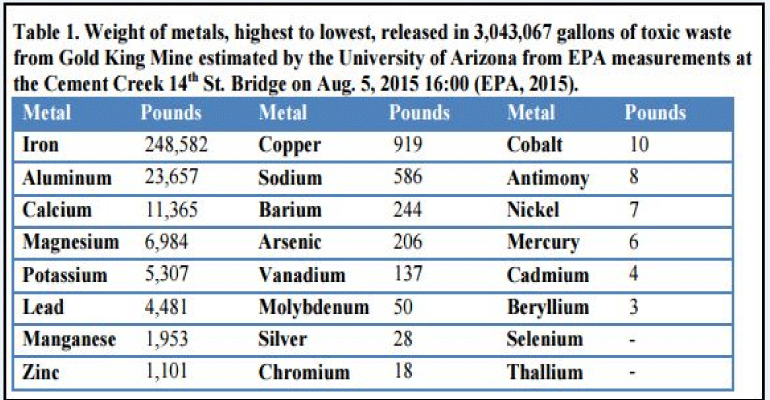The University of Arizona released a draft report on the effects of the spill of more than 3 millions gallons of toxic water from the Gold King Mine in Colorado. There has been concern about metals contained in the water and metals that may settle into the river sediments.
UofA says, “Once water and sediments from the Animas River enter the San Juan River, they are diluted and mixed in with many times the volumes water and tons of sediments that this river carries daily down to the Colorado. Therefore, it is highly unlikely that the overall water quality of the San Juan or the Colorado rivers have been or will be measurably affected by this release.”
They also say, “At the Colorado River at Lee’s Ferry, the Colorado River flows on average at between 13.5 and 14.7 million acre feet per year. So, 9 acre-feet of toxic spill over 13.5 million acre-feet per year is roughly 1 millionth of the flow for one year. In terms of the sediment load, the impacted sediment entering the Colorado River is roughly 190 tons and approximately, 44,400,000 tons of sediment arrives at Glen Canyon Dam each year. If all the sediment were to reach Glen Canyon Dam (excluding the existing sediment), the dilution is approximately 1:2,300,000.”
The report contains a table which shows the estimated metal content of the water near the release site. The yellow-orange color was due mainly to iron.

There was some concern about cadmium in the Yuma agricultural area because cadmium can accumulate in vegetables and grain. However, UofA says, “Using Colorado River daily flow volumes of water and sediments, we estimated that cadmium levels in water will be non-detectable and several orders of magnitude below the drinking water standard of 5 micrograms per liter (5 parts per billion).”
Read the full 7-page report here.
